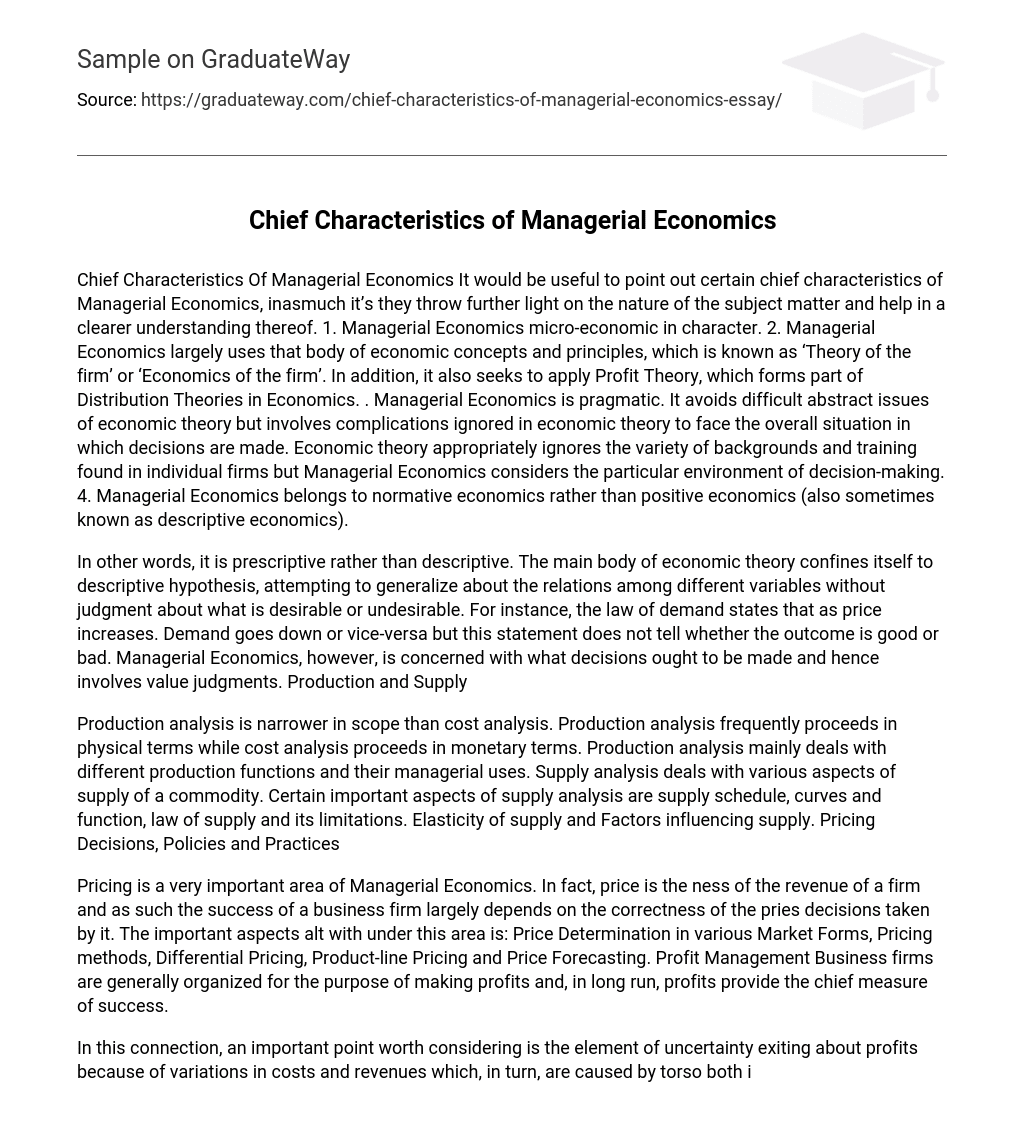To provide a clearer understanding of Managerial Economics, it is advantageous to highlight its main traits as they shed light on the subject matter.
- Managerial Economics micro-economic in character.
- Managerial Economics largely uses that body of economic concepts and principles, which is known as ‘Theory of the firm’ or ‘Economics of the firm’. In addition, it also seeks to apply Profit Theory, which forms part of Distribution Theories in Economics.
- Managerial Economics is pragmatic. It avoids difficult abstract issues of economic theory but involves complications ignored in economic theory to face the overall situation in which decisions are made. Economic theory appropriately ignores the variety of backgrounds and training found in individual firms but Managerial Economics considers the particular environment of decision-making.
- Managerial Economics belongs to normative economics rather than positive economics (also sometimes known as descriptive economics).
In simpler terms, economic theory typically focuses on describing relationships between variables without making any judgments about what is good or bad. For example, the law of demand states that as prices increase, demand decreases, but it does not indicate whether this outcome is desirable or undesirable.
On the other hand, Managerial Economics deals with making decisions and involves value judgments about what actions should be taken.
Production analysis is a narrower focus compared to cost analysis, often discussed in physical terms. Cost analysis, on the other hand, is discussed in monetary terms. The main focus of production analysis is on different production functions and their managerial applications. Supply analysis covers various aspects related to the supply of a commodity, including supply schedules, curves, and functions, the law of supply and its limitations. It also examines the elasticity of supply and the factors that influence it.
Pricing is a crucial aspect of Managerial Economics. The revenue of a firm heavily relies on the correctness of price decisions. The key elements to consider in this area include Price Determination in different Market Forms, Pricing methods, Differential Pricing, Product-line Pricing, and Price Forecasting. Business firms are primarily organized to earn profits, making it the main gauge of success in the long run.
One crucial aspect to consider is the presence of uncertainty regarding profits due to fluctuations in costs and revenues caused by factors both internal and external to the firm. If we had perfect knowledge of the future, analyzing profits would be simple. However, in an uncertain world, expectations are not always met, making profit planning and measurement a challenging area in Managerial Economics. Key topics in this field include the nature and measurement of profit.
Managing a company’s investments can be the most challenging and intricate business issues for managers. These problems involve substantial amounts of money and demand considerable time and effort to resolve. Capital management encompasses the planning and control of capital expenditure, including crucial profit planning techniques like break-even analysis.
The main subjects covered in the text are Cost of Capital, Rate of Return, and Selection of Project. These different aspects mentioned above signify the significant uncertainties that a business firm must consider, namely demand uncertainty, cost uncertainty, price certainty, profit uncertainty, and capital uncertainty.





